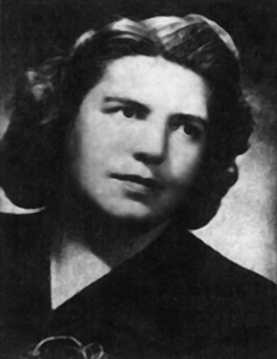
Tristan, also known as Tristram, Tristyn or Tristain and similar names, is the hero of the legend of Tristan and Iseult. In the legend, he is tasked with escorting the Irish princess Iseult to wed Tristan's uncle, King Mark of Cornwall. Tristan and Iseult accidentally drink a love potion during the journey and fall in love, beginning an adulterous relationship that eventually leads to Tristan's banishment and death. The character's first recorded appearance is in retellings of British mythology from the 12th century by Thomas of Britain and Gottfried von Strassburg, and later in the Prose Tristan. He is featured in Arthurian legends, including the seminal text Le Morte d'Arthur, as a skilled knight and a friend of Lancelot.
Désiré-Émile Inghelbrecht was a French composer, conductor and writer.

Claude Vivier was a Canadian composer, pianist, poet and ethnomusicologist of Québécois origin. After studying with Karlheinz Stockhausen in Cologne, Vivier became an innovative member of the "German Feedback" movement, a subset of what is now known as spectral music. He was also among the first composers in either Europe or the Americas to integrate elements of Balinese music and gamelan in his compositions, alongside Lou Harrison, John Cage and fellow Québécois Colin McPhee.

Tristan Klingsor, birth name Léon Leclère, was a French poet, musician, painter and art critic, best known for his artistic association with the composer Maurice Ravel.

Olivier Py is a French stage director, actor and writer.

Jean-Claude Malgoire was a French oboist and later conductor.
Alfredo Nigro is an Italian tenor.
Claude Abromont is a French musicologist, essayist and writer. He is mostly known for his Guide de la théorie de la musique.
Alain Margoni is a French classical composer.
Kwangchul Youn is a South Korean operatic bass and academic voice teacher. He made an international career based in Germany, from 1994 to 2004 at the Berlin State Opera. He has performed leading roles at international opera houses and festivals, such as Gurnemanz in Parsifal at the Bayreuth Festival, Mephisto in Faust at the Vienna State Opera, and King Marke in Tristan und Isolde at the Metropolitan Opera.

Tristan and Isolde is the title of two oil paintings by the Spanish artist Rogelio de Egusquiza. Both works are based on the opera Tristan und Isolde by the German composer Richard Wagner, whom Egusquiza idolised. The first painting, subtitled Death and also known as La mort d'Isolde, was completed in 1910 and depicts Isolde's "Liebestod", as she collapses in death upon the lifeless body of Tristan. The second painting, subtitled Life, was completed two years later and depicts the lovers embracing in the night, a scene from the second act of Wagner's opera.

Helena Braun was a German dramatic soprano. She made her stage debut in Mozart's Le nozze di Figaro in 1928 and joined the Vienna State Opera and the Bavarian State Opera in 1939 and 1940, respectively. She became known for Wagnerian roles such as Brünnhilde in Der Ring des Nibelungen and Ortrud in Lohengrin.

Orion is a 1979 orchestral suite by Claude Vivier, inspired by the constellation of the same name. It is among the first compositions in Vivier's catalogue to delve into a unique compositional style he referred to as the jeux de couleurs. A typical performance lasts around thirteen minutes.
Wo bist du Licht! is a 1981 piece for mixed orchestra, mezzo-soprano and tape by Canadian composer Claude Vivier. Vivier completed the piece in early 1981, on a commission from the Canadian Broadcasting Corporation. It is dedicated to Rober Racine. The notes given by Vivier in the finished manuscript describe it as follows: "A meditation on human suffering, this piece is intended as one long continuous melody. The music can be perceived from three different aspects: formal, melodic, or textual."

Zipangu is a 1980 work for string orchestra by Canadian composer Claude Vivier. Inspired by traditional kabuki theatre, it is considered by many to be the composer's most aggressive and "unforgiving" piece, as it features a plethora of extended techniques for strings and denser harmonic content atop a complex melody, similar to the string compositions of Krzysztof Penderecki. A typical performance lasts around sixteen minutes.
Bouchara is a 1981 work for mixed chamber ensemble by Canadian composer Claude Vivier. It was originally intended to serve as an interlude for his unfinished opera Rêves d'un Marco Polo (1983-), but was published independently of the opera after weeks of deliberation. A typical performance lasts around twelve minutes.
Canadian composer Claude Vivier (1948–83) wrote four extant pieces for the tape recorder, in the musique concrète tradition established by French composer Pierre Schaeffer in the 1940s. Multiple other pieces from his career include the tape machine being used as an additional instrument to various ensembles. The majority of these compositions were a result of Vivier studying with Gottfried Michael Koenig at the Institute for Sonology in Utrecht.
Cinq chansons pour percussion is a 1980 work for solo percussionist by Canadian composer Claude Vivier. It is an example of an extended American gamelan, featuring a very large array of percussion instruments that include gongs and bells from Chinese, Japanese, Indonesian and Thai origin.
Glaubst du an die Unsterblichkeit der Seele? is an unfinished 1983 chamber piece by Canadian composer Claude Vivier. It is one of his most famous compositions, as the libretto is claimed by some to have predicted the composer's own murder in March of the same year. The piece was left incomplete and unrevised with just three short movements, a typical performance lasting around eight minutes.
Et je reverrai cette ville étrange is a 1981 work for chamber ensemble by Canadian composer Claude Vivier. It is an extreme manifestation of monody, with all instruments playing in unison with a continuous melodic line throughout the piece. Musicologists generally view this piece as one of the apexes of his timbral concept, jeux de couleurs.









